Editor Kelly Kendrick on why he chooses Adobe Premiere Pro and Frame.io to cut films like Tribeca’s “Every Body”, an uplifting story of the intersex community
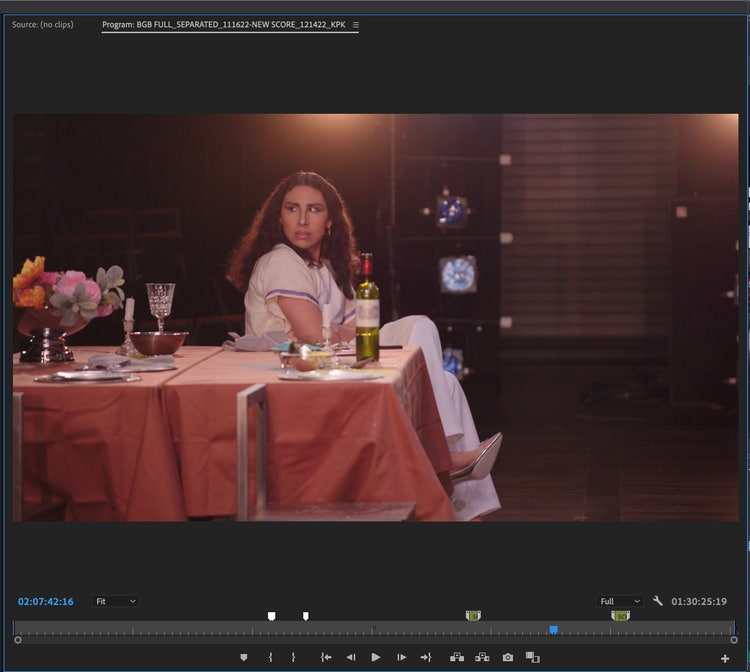
Image source: Kelly Kendrick/ “Every Body”.
In ongoing conversations about gender and identity, the lived experiences of intersex people are often overlooked. The new documentary film “Every Body” looks to bring their experiences to the forefront. Focusing on the stories of three intersex people, it reveals both struggles and triumphs as they navigate a world that often operates within rigid binary notions of gender. “Every Body” also explores the history of the intersex movement featuring exclusive footage from the NBC News archives, which helps explain the modern-day treatment of intersex people.
Oscar-nominated and Emmy-winning filmmaker Julie Cohen (RGB, My Name Is Pauli Murray) allows her documentary participants to guide this intimate portrait of life in between and outside gender binaries and creates something wholly unique in the process. In telling this complex story, she was assisted by editor Kelly Kendrick whose skills helped give voice to the people profiled, while portraying the historical experiences of the intersex community.
For Kendrick, Adobe Creative Cloud tools were indispensable in the journey from raw assembly to final cut. With Premiere Pro, he was able to experiment with order and shot choice and synchronize a pop and rock soundtrack with dialog and visuals. Frame.io also played a critical role in the post-production process enabling Kendrick to collaborate and share feedback with colleagues in multiple locations.
Before the film’s Tribeca Festival premier, I asked Kelly about the personal influences on his editing style and how Adobe tools helped shape the uplifting story of a too-long-ignored and misunderstood community.
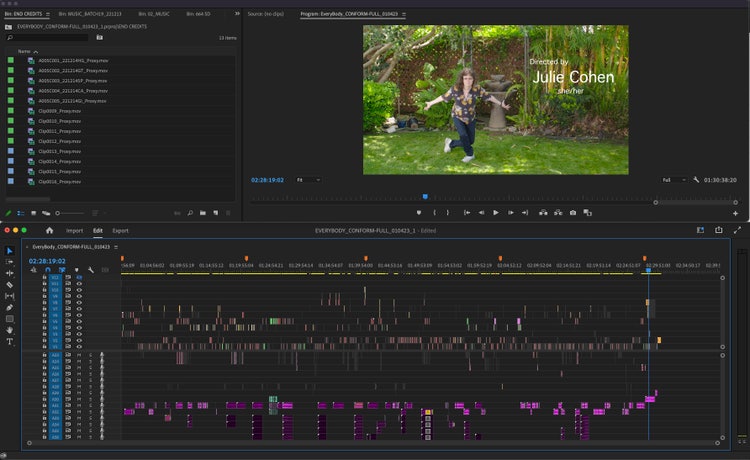
Image source: Kelly Kendrick.
How and where did you first learn to edit?
I went to college at the University of Tulsa. At the time I was playing in a few bands. I started experimenting by editing short concert videos that my friends and I had filmed. I went to school for music and a year or two in, they announced a film-studies program. I was immediately drawn to editing. I started asking other classmates if I could edit their assignments for them. They said no.
How do you begin a project/set up your workspace?
It depends on the project. If it is verité-driven, I watch every single frame of the footage making very detailed selects, trying to find some magical moments I can begin to build scenes around. If it is more interview driven, I immediately dive into transcripts and start building out radio cuts of scenes and I don’t worry about the footage initially. Music is important for me, so I also like to start with a big bin of music and soundtracks to play around with. Whatever it is, I start by finding the little things that excite and inspire me right away, to begin editing and find the style of the project. I try not to be too fussy about the way I “normally” work. Every project is different, and it is better to adapt than to try to force the project to fit your own workflow.
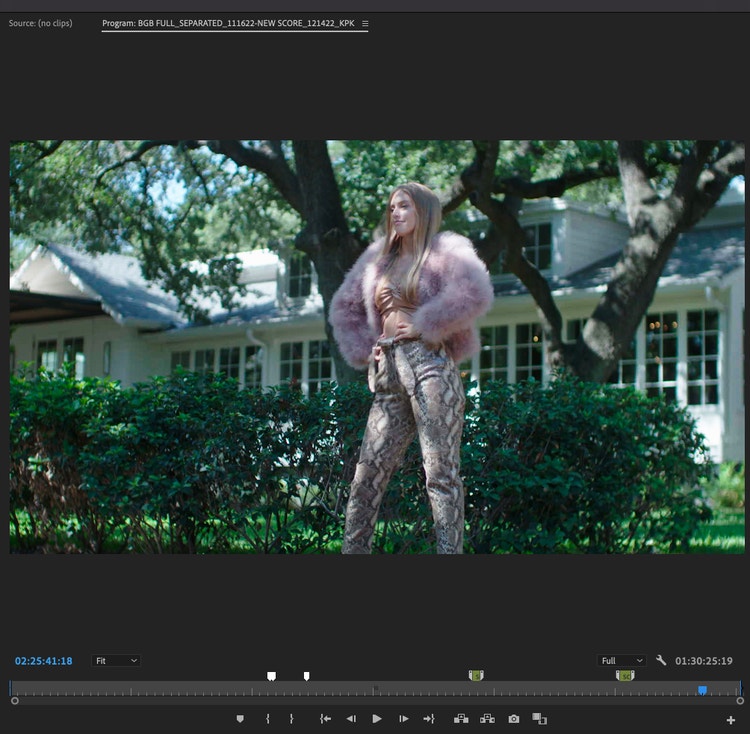
Image source: Kelly Kendrick/ “Every Body”.
Tell us about a favorite scene or moment from this project and why it stands out to you.
The opening title sequence was really fun. I must have watched 50 hours of gender reveal parties trying to find some amazing ones and set that all to a musical montage for our opening title sequence. People are wild! Near the end of the film, we have a protest scene that includes our main characters, which we eventually opened up to include protests worldwide. Once you see people all over the world coming together in unison for a specific purpose, it is just so epic and inspiring.
What were some specific post-production challenges you faced that were unique to your project? How did you go about solving them?
Julie decided early on to use gender-flipped covers of popular pop and rock tunes along with a composed score by Amanda Yamate. Trying to find the exact right songs and to have those lyrics be meaningful and have an important connection to the scenes was a challenge. To blend verité scenes and dialog with the lyrics even as the scenes were constantly evolving during the edit was another layer. Also, I was asked to do some sort of dance across the screen for the closing credit sequence which was undoubtedly the biggest challenge. I think what I did — no one would consider a dance.
What Adobe tools did you use on this project and why did you originally choose them? Why were they the best choice for this project?
This was the first time I was given the choice to edit with what I wanted, and I chose Premiere. Even though my timeline becomes more organized as the project progresses, I like getting really messy when first assembling scenes. I like shuffling things around like a jigsaw puzzle and experimenting with order and shot choice randomly, trying to discover something unexpected. I find that is much easier in Premiere, and for me, everything is faster. I also make a ton of selects so being able to have multiple timelines open is amazing.
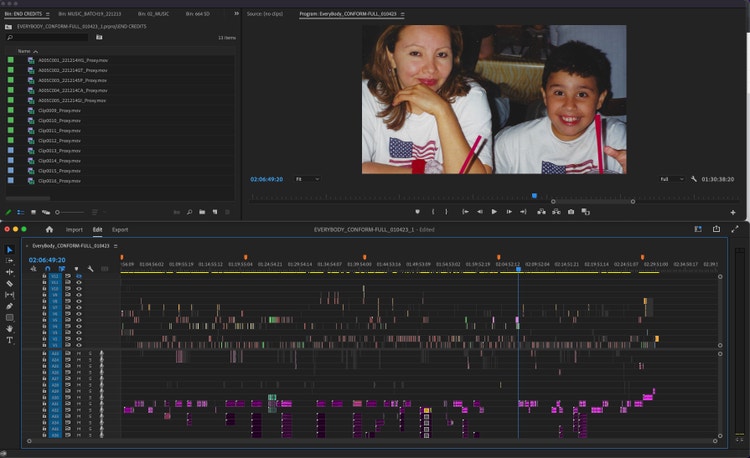
Image source: Kelly Kendrick
Do you use Frame.io as part of your workflow? If so, how do you use it and why did you choose it?
Now that almost everything is done remotely, it is so easy and fast to post full cuts of the film, or scenes in progress, on Frame.io without sharing full Premiere projects. The ability to add time- coded notes, and to be able to organize cuts into folders over time makes it so easy to get quick feedback.
If you could share one tip about Premiere Pro, what would it be?
I have keyboard shortcuts for things I use the most. It does so much for your speed. I want to use the fewest tools, as efficiently as possible. It’s so easy to get a quick audio mix in Premiere using brackets! I also use extend edit constantly. It is so fast, simple, and perfect. It’s good for getting music to land exactly where you want it, to get rid of flash frames (which I never do), or to close a gap. It does it all! Oops — I think that was more than one tip.
Who is your creative inspiration and why?
What an impossible question! I watch a lot of films and documentaries. I spend a lot of time playing music and listening to music. I am so naturally curious about the world and actively look for inspiration and I think that naturally bleeds into your own work. This answer feels like a cop-out but if I start listing inspirations, we will be here a while. Okay fine, I would also love to edit Julie’s next movie, and a Bong Joon-ho movie, or something with a lightsaber, or something with Iron Maiden in it.
What’s the toughest thing you’ve had to face in your career and how did you overcome it? What advice do you have for aspiring filmmakers or content creators?
I think the toughest thing was the initial move to New York from Oklahoma and leaving my family and friends behind. I knew exactly one person in New York and had no concept of how to get started there. That was a huge, scary leap of faith. My best advice would be to learn as much as possible about every aspect of film, the technology of film making, and storytelling, as you do learning an editing program. I obsessively watch “making of” documentaries about movies I like. Of course, be fluent in whatever program you are using, but people are ultimately hiring you for your judgement, and your ability to make something meaningful out of footage they have likely spent years working towards. If you have gained some experience, don’t be afraid to ask people, “Can I edit this!?” People will surprise you.
Share a photo of where you work. What’s your favorite thing about your workspace and why?
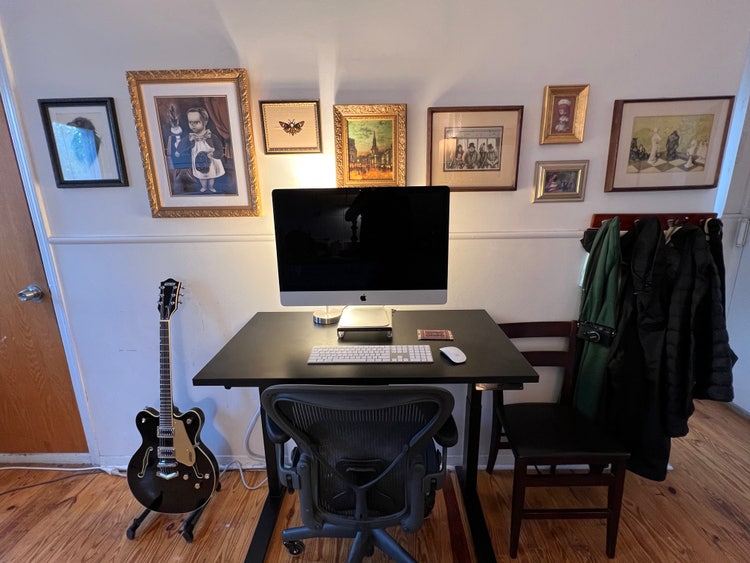
Image source: Kelly Kendrick
I like the simplicity. I have a computer on a standing desk. That’s it. I keep my desk fairly empty so I can focus. I keep an instrument nearby for breaks. I also like my wall of art which I change out from time to time. My sister has started doing horror cross-stitches which are amazing. You might see her Silence of the Lambs cross-stitch in this photo of my workspace.